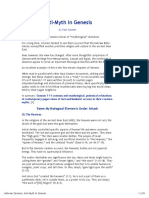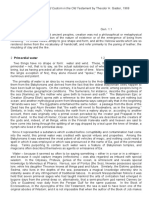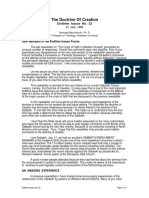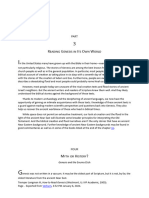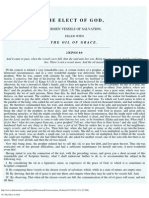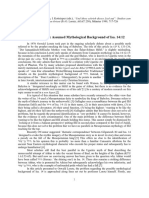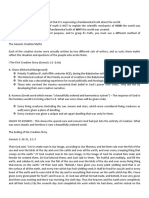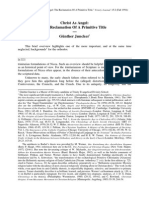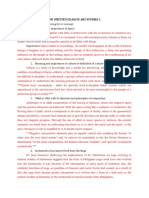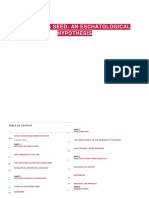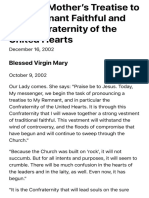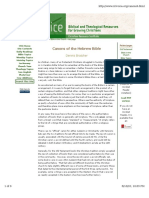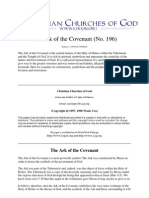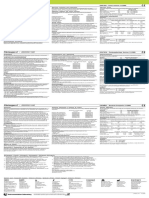0% found this document useful (0 votes)
229 views12 pagesThe Trinity in Creation
The New Testament makes it very clear that the Godofthe Bible is one God in three distinct persons. It also directly states that thepre-Incarnate Word (or second member ofthe Trinity) directly participated in every act ofcreation. Likewise, this doctrine can be supportedfrom the text of Genesis 1. While the use oftheplural noun Elohim usedthroughoutthe Old Testament is inadequate to demonstrate it, theplural pronoun and plural predication used in Gen 1:26 does strongly suggest it
Uploaded by
Padre Luciano Couto, ccnCopyright
© © All Rights Reserved
We take content rights seriously. If you suspect this is your content, claim it here.
Available Formats
Download as PDF, TXT or read online on Scribd
0% found this document useful (0 votes)
229 views12 pagesThe Trinity in Creation
The New Testament makes it very clear that the Godofthe Bible is one God in three distinct persons. It also directly states that thepre-Incarnate Word (or second member ofthe Trinity) directly participated in every act ofcreation. Likewise, this doctrine can be supportedfrom the text of Genesis 1. While the use oftheplural noun Elohim usedthroughoutthe Old Testament is inadequate to demonstrate it, theplural pronoun and plural predication used in Gen 1:26 does strongly suggest it
Uploaded by
Padre Luciano Couto, ccnCopyright
© © All Rights Reserved
We take content rights seriously. If you suspect this is your content, claim it here.
Available Formats
Download as PDF, TXT or read online on Scribd
/ 12
